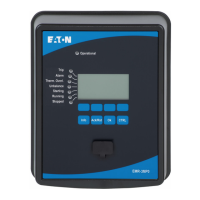relay.) If there is no more free memory, the oldest record will be overwritten (FIFO). Up to
20 records can be stored.
How do I close the overlay/pop-up?
Use the »OK« key.
How to nd out quickly, whether or not a fault has led to a trip?
Within the overview menu of the fault recorder, faults that have led to a trip are indicated
by a ash “⚡” icon (on the right-hand side).
Which fault record pops up?
The last fault.
Content of a Fault Record
The information given in a fault record can essentially be divided into 3 parts:
Part 1: Common Information (independent of protection function)
Date and Time Date and Time of the Fault
Fault No. This counter will be incremented with each fault (»Prot . Pickup«)
Act Set The active parameter set
Fault duration Time period from the rising edge of the General Pickup (»Prot . Pickup«)
signal up to the falling edge of the General Pickup Signal. Please note that
General Pickup is an or-connection (disjunction) of all Pickup signals.
General Trip (»Prot . Trip«) is an OR-connection of all Trips.
Time to trip The time between pickup and trip. Please note: No time to trip will be
shown if the rst pickup and the rst trip are issued by dierent protection
modules.
Pickup Name of the module that picked up rst.
Trip Name of the module that tripped rst.
Active AdaptSet In case that adaptive sets are used, the number of the active set will be
displayed.
Part 2: Information specic to the protection function that detected the fault
e. g. Fault type The bits of information given in this part depend on the protection
module.
For example, in case of phase-selective protection functions, there is also
data about the single phases.
202 www.eaton.com EMR-3MP0
5 Recorders
5.2 Fault Recorder

